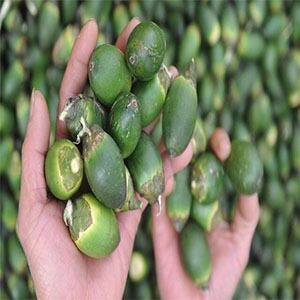Betel Nut
Betel nut can produce optimally at an altitude of 0-1,000 m above sea level (meters above sea level). Areca nut is ideally planted at an altitude below 600 m above sea level.
Good soil for betel nut development is well aerated soil, deep solum soil without a rock layer, lateric soil type, red clay and alluvial.

The acidity of the soil is good for the growth of areca nut plants around pH 4-8. Rainfall is between 750-4,500 mm/year which is evenly distributed throughout the year or rainy days of about 100-150 days.
Areca nut is very suitable for areas with a moderate climate type and a bit wet with wet months 3-6 months/year and dry months 4-8 months/year. optimum temperature between 200 – 320 C.
Areca nut plants require an area with humidity between 50 – 90 %. The appropriate irradiation ranges from 6-8 hours / day.
Betel nut benefits
Areca nut is mainly grown for its seeds. Areca nut is known as one of the mixtures of people eating betel, in addition to gambier and lime.
Traditionally, areca nut is used in potions to treat dysentery, bloody diarrhea, and scabies. These seeds are also used as a producer of red dyes and tanning materials.
Betel nut root, in the past was used as a poison to get rid of enemies or people who are not liked. The tube-like leaf midrib (known as upih) is used to wrap cakes and food.
Umbutnya eaten as fresh vegetables or made pickles.
Areca nut is also often planted, outdoors or indoors, as an ornamental or ornamental tree.
